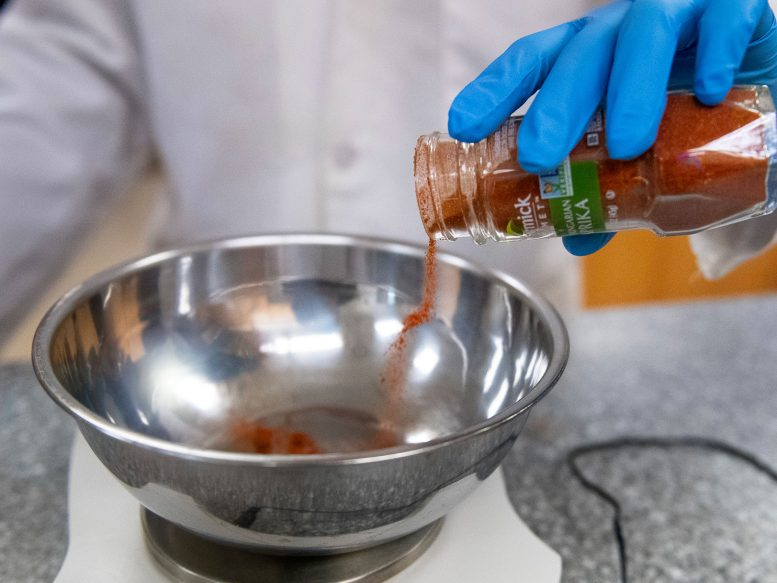Adding Spice to Meals Could Help You Eat Less, Says Penn State Study

A new study from researchers at Penn State suggests that making meals just a little spicier might be a surprisingly simple way to reduce calorie intake without forcing yourself to diet or restrict portion sizes. The research, published in the journal Food Quality and Preference, explored how a touch of chili heat affects how much people eat during a meal. The findings show that people consumed fewer calories and ate more slowly when meals were prepared with slightly higher levels of spice.
This study is important because it doesn’t suggest cutting out favorite foods or following strict diet plans. Instead, it looks at how changing oral processing behaviors—basically, the way we eat—can naturally influence calorie intake. Below, you’ll find all the key details of the study, what was tested, what the researchers observed, and what it could mean for everyday eating habits.
How the Study Was Designed
The research team carried out three experiments involving a total of 130 adult participants. They wanted to test whether increasing the “oral burn” sensation in food—the tingling heat that comes from chili peppers—could slow people down while eating, and in turn reduce how much they consumed.
Participants were served one of two meals:
- Beef chili
- Chicken tikka masala
Each of these meals came in two versions: a mild version and a spicier version. To carefully control the spiciness without altering the overall flavor, the researchers adjusted the ratio of hot paprika to sweet paprika in the recipes. This ensured that the chili flavor remained constant, but the perception of spiciness varied.
Careful Monitoring of Eating Behavior
To precisely measure the effects, the team recorded participants using high-definition video while they ate. These videos allowed the researchers to track a number of detailed behaviors:
- Total amount of food consumed
- Calories consumed
- Amount of water consumed
- Meal duration
- Eating speed (grams per minute)
- Bite rate
- Bite size
- Appetite ratings before and after the meal
- Ratings of liking and spiciness perception
By analyzing all of these factors, the team could determine whether spicier food led to different eating patterns compared to mild food.
Main Findings
The results were consistent across the experiments:
- Eating slowed down when meals were spicier. Participants took longer to finish their food, which is significant because slower eating is linked to eating less overall.
- Calorie intake decreased. People ate fewer calories in the spicy versions of meals compared to the mild ones.
- Meal enjoyment was not reduced. Importantly, participants didn’t report liking the spicier food any less than the mild versions.
- Water intake didn’t change much. Some might assume that people drank more water during spicy meals, which could explain the reduced intake. But the data showed water consumption was not significantly different.
- Appetite levels stayed the same. Even though people ate less, they reported feeling just as full after the meal as those who ate the mild version.
Specific Numbers from the Study
In one of the beef chili experiments, participants consumed about 11% fewer calories when the meal was spiced up. In a stronger version of the chicken tikka masala experiment, calorie reduction went up to 18%. These are significant differences, especially considering that the only change was the level of spiciness.
One interesting note is that in an earlier chicken tikka trial (called experiment 2a), the difference in spiciness between the mild and spicy meals was too small to be noticeable, and no effect was observed. This suggests that for spice to have an impact, the increase in oral burn must be clearly detectable by the eater.
Why Spiciness Affects Eating
The explanation lies in oral processing behaviors. When food has a noticeable spicy kick, people naturally eat more slowly. This means:
- Food stays in the mouth longer.
- There’s more time for the body’s satiety signals to register.
- The result is a stronger feeling of fullness with less food consumed.
This finding matches results from other studies where altering texture (such as making foods chewier) slowed down eating and reduced intake. What makes this study unique is that the effect was achieved through spice, a change that doesn’t compromise taste or enjoyment.
Limitations of the Research
Although the findings are promising, there are some limitations:
- The study was conducted in a controlled lab setting, not real-world eating environments. Social situations, varied cuisines, and individual differences could influence the effect.
- The participants were typical spice consumers—not extreme spice lovers or avoiders—so results may differ among people with very different spice tolerance levels.
- The meals tested were limited to beef chili and chicken tikka masala. More studies would be needed to see if the effect holds across other cuisines and food types.
Funding and Contributors
This research was supported by:
- A gift from the McCormick Science Institute
- Federal appropriations under the Hatch Act from the USDA’s National Institute of Food and Agriculture
The lead researcher was Paige Cunningham, a postdoctoral researcher who completed her doctorate in nutritional sciences at Penn State in 2023. Other contributors included John Hayes, professor of food science at Penn State, and Isaiah Smith, an undergraduate student involved through the NASA Pennsylvania Space Grant Consortium’s Undergraduate Research Internship Program.
Broader Implications
This study points to a simple dietary strategy: instead of restricting food or portion sizes, just make your meals a bit spicier. For many people, this could be an easy way to cut down on calories while still enjoying their food.
There are also potential public health implications. Small, manageable changes like this can be more effective and sustainable than drastic diet overhauls. Since people didn’t feel hungrier or dislike their food, adding spice could be a useful tool for weight management and obesity prevention.
What We Already Know About Spicy Foods
This isn’t the first time spicy foods have been linked to eating behavior and metabolism. Here are a few relevant points from prior research:
Spicy Foods and Metabolism
Capsaicin—the compound responsible for the heat in chili peppers—has been studied for its potential to boost metabolism slightly. Some research shows that it increases thermogenesis (the body’s production of heat), which means the body may burn more calories after eating spicy food. However, the effect is usually modest and not enough on its own for weight loss.
Spicy Foods and Appetite Regulation
Several studies have indicated that spicy foods can suppress appetite. For example, meals containing chili can reduce the desire for fatty, salty, and sweet foods in the hours after eating.
Spiciness in Different Cultures
Spicy food is a staple in many cuisines around the world, such as Indian, Thai, Korean, and Mexican. In populations accustomed to regular chili consumption, tolerance develops, which raises the question: Does long-term exposure reduce the effect? This is something researchers still need to explore.
Potential Downsides of Spicy Foods
While many people enjoy spice, some may experience issues such as acid reflux, stomach irritation, or discomfort with higher levels of chili consumption. Therefore, this strategy might not work for everyone.
The Takeaway
This Penn State study provides solid evidence that slightly spicier meals lead people to eat slower and consume fewer calories, without feeling less satisfied or enjoying their meal any less. It’s a practical reminder that small changes in the way food is prepared can make a meaningful difference in eating habits.
If you’re looking for an easy and natural way to reduce calorie intake, adding a bit more chili heat to your meals might be worth a try.





